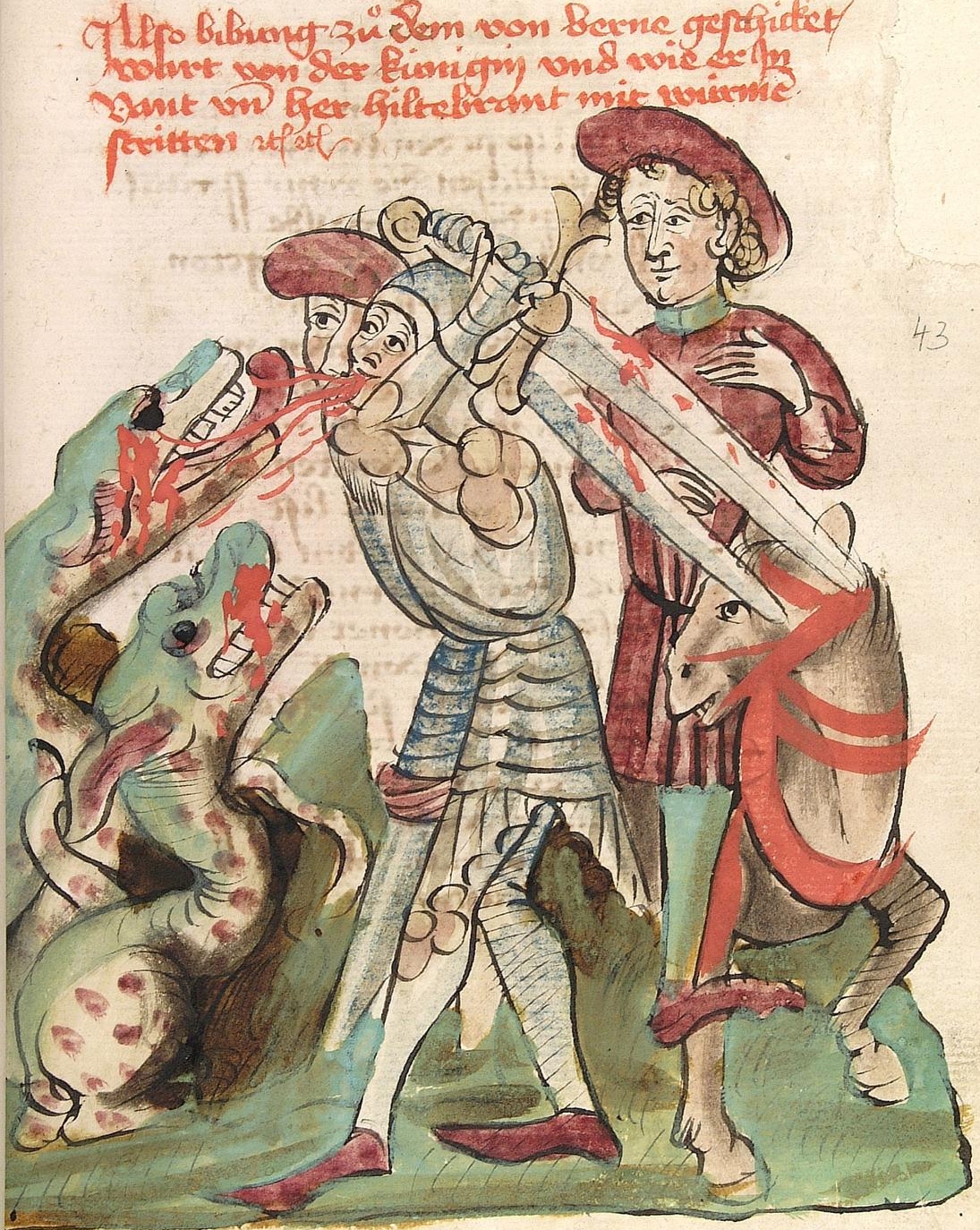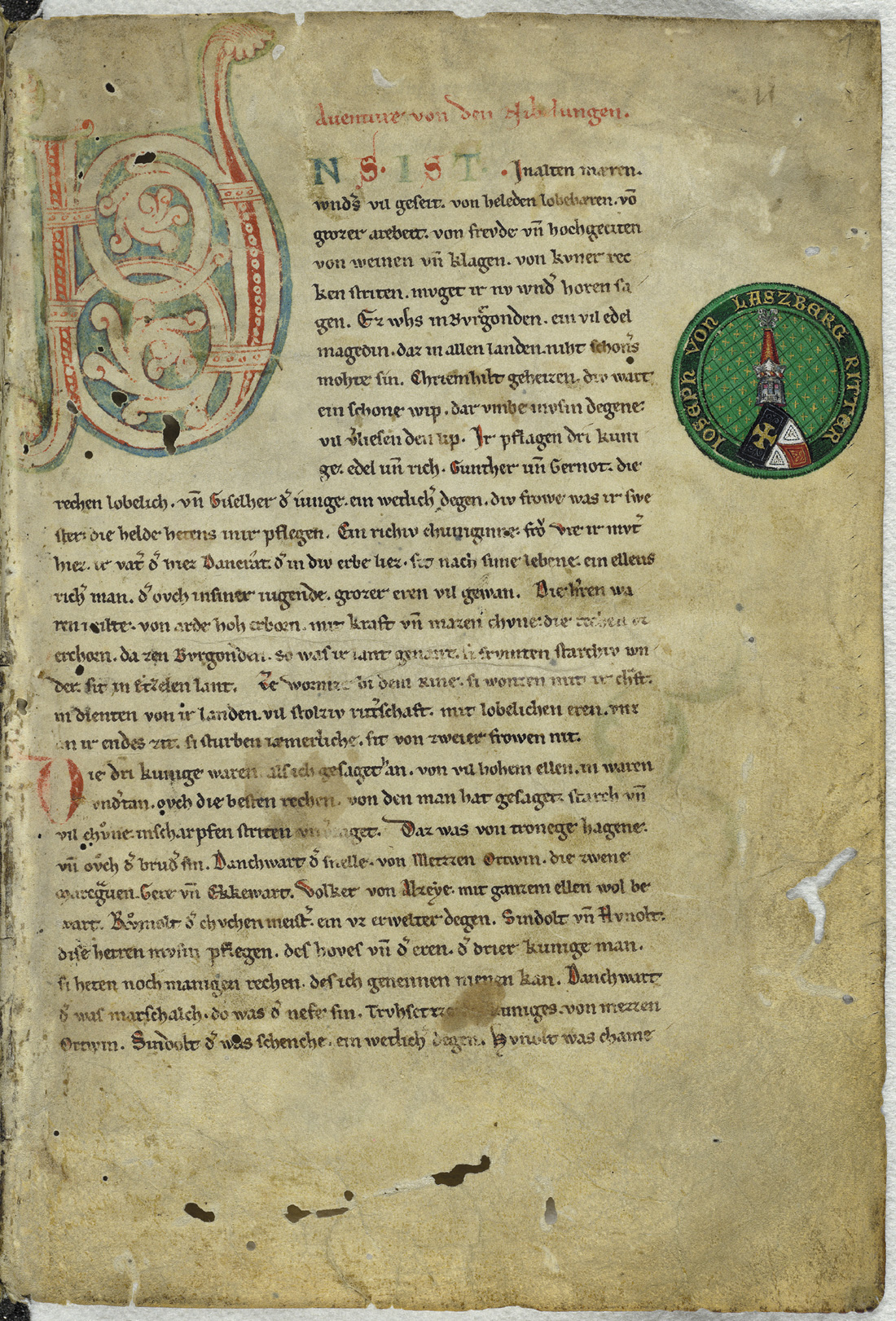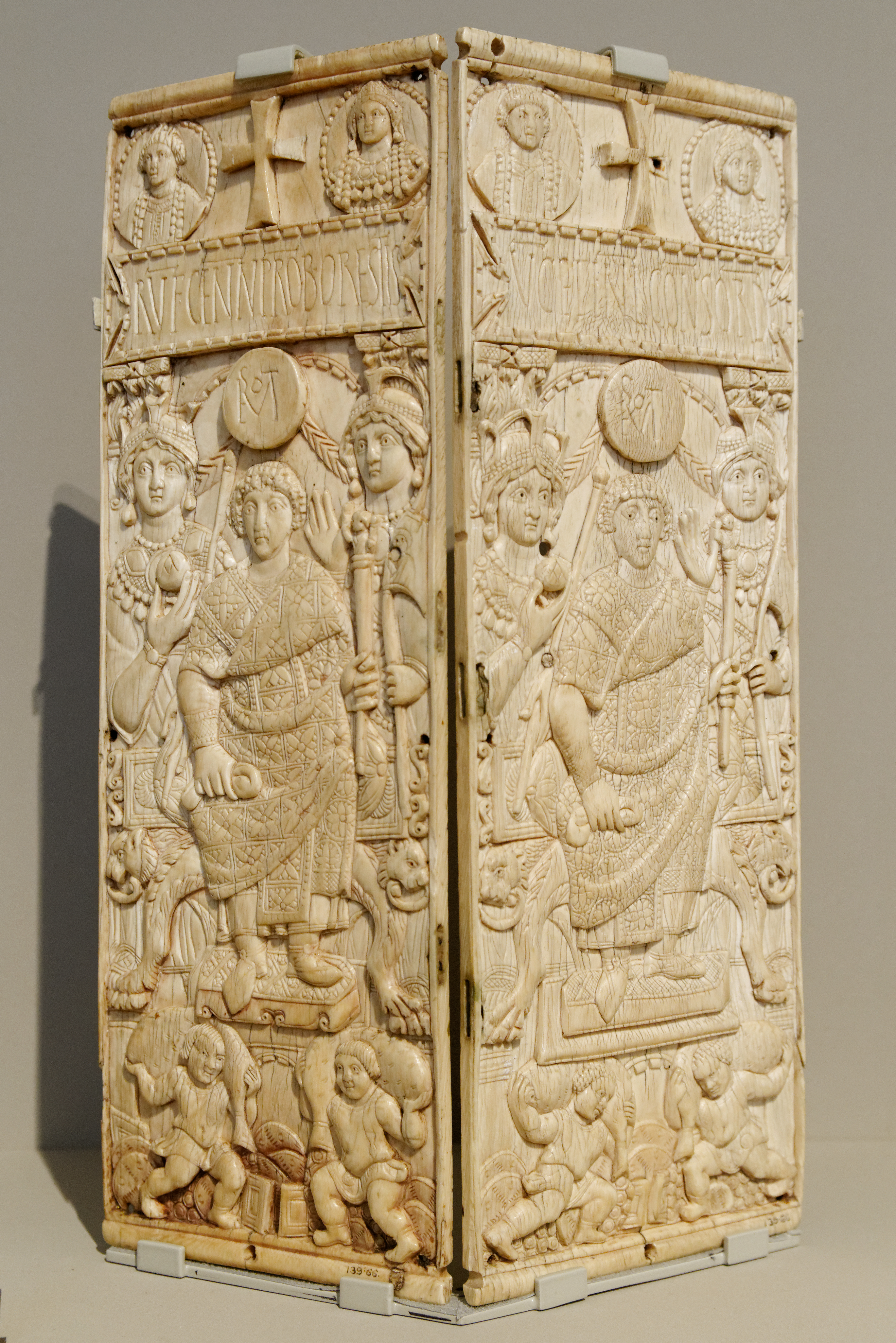|
Amali Dynasty
The Amali – also called Amals, Amalings or Amalungs – were a leading dynasty of the Goths, a Germanic people who confronted the Roman Empire during the decline of the Western Roman Empire. They eventually became the royal house of the Ostrogoths and founded the Ostrogothic Kingdom of Italy. Origin The Amal clan was claimed to have descended from the divine. Jordanes writes: Now the first of these heroes, as they themselves relate in their legends, was Gapt, who begat Hulmul. And Hulmul begat Augis; and Augis begat him who was called Amal, from whom the name of the Amali comes. Athal begat Achiulf and Oduulf. Now Achiulf begat Ansila and Ediulf, Vultuulf and Ermanaric. This provides the following stemma for the earliest rulers of the Goths, before outlining in more detail the two divisions that arose from the son, Achiulf of Athal, the last in this early lineage : Gapt or Gaut is the Scandinavian god of war. Hulmul or Humli-Hulmul, is considered the divine father of th ... [...More Info...] [...Related Items...] OR: [Wikipedia] [Google] [Baidu] |
Dynasty
A dynasty is a sequence of rulers from the same family,''Oxford English Dictionary'', "dynasty, ''n''." Oxford University Press (Oxford), 1897. usually in the context of a monarchical system, but sometimes also appearing in republics. A dynasty may also be referred to as a "house", "family" or "clan", among others. Historians periodize the histories of many states and civilizations, such as Ancient Iran (3200 - 539 BC), Ancient Egypt (3100 – 30 BC) and Ancient and Imperial China (2070 BC – AD 1912), using a framework of successive dynasties. As such, the term "dynasty" may be used to delimit the era during which a family reigned. Before the 18th century, most dynasties throughout the world have traditionally been reckoned patrilineally, such as those that follow the Frankish Salic law. In polities where it was permitted, succession through a daughter usually established a new dynasty in her husband's family name. This has changed in all of Europe's remaining mo ... [...More Info...] [...Related Items...] OR: [Wikipedia] [Google] [Baidu] |
Ukraine
Ukraine ( uk, Україна, Ukraïna, ) is a country in Eastern Europe. It is the second-largest European country after Russia, which it borders to the east and northeast. Ukraine covers approximately . Prior to the ongoing Russian invasion, it was the eighth-most populous country in Europe, with a population of around 41 million people. It is also bordered by Belarus to the north; by Poland, Slovakia, and Hungary to the west; and by Romania and Moldova to the southwest; with a coastline along the Black Sea and the Sea of Azov to the south and southeast. Kyiv is the nation's capital and largest city. Ukraine's state language is Ukrainian; Russian is also widely spoken, especially in the east and south. During the Middle Ages, Ukraine was the site of early Slavic expansion and the area later became a key centre of East Slavic culture under the state of Kievan Rus', which emerged in the 9th century. The state eventually disintegrated into rival regional po ... [...More Info...] [...Related Items...] OR: [Wikipedia] [Google] [Baidu] |
Annals Of Quedlinburg
The ''Annals of Quedlinburg'' ( lat, Annales Quedlinburgenses; german: Quedlinburger Annalen) were written between 1008 and 1030 in the convent of Quedlinburg Abbey. In recent years a consensus has emerged that it is likely that the annalist was a woman. The annals are mostly dedicated to the history of the Holy Roman Empire; they also contain the first written mention of the name of Lithuania ("Litua"), dated to March, 1009. The original document has disappeared, surviving only as a 16th-century copy held in Dresden, but its contents endure as a scholarly resource. Background The city of Quedlinburg, Germany, was first mentioned in writing in a document dated to 922. Saint Mathilda founded Quedlinburg Abbey, a religious community for women, there in 936, leading it until her death in 966. The abbey became a premier educational institution for the female nobles of Saxony, and maintained its mission for nearly 900 years. The city served as an imperial palatinate of the Saxon empe ... [...More Info...] [...Related Items...] OR: [Wikipedia] [Google] [Baidu] |
Kaiserchronik
The ''Kaiserchronik'' (''Imperial Chronicle'') is a 12th-century chronicle written in 17,283 lines of Middle High German verse. It runs from Julius Caesar to Conrad III, and seeks to give a complete account of the history of Roman and German emperors and kings, based on a historiographical view of the continuity of the Roman and German successions. The overall pattern is of a progression from pagan to Christian worlds, and theological disputations stand at the turning-points of the Christianization of the Empire. However, much of the material is legendary and fantastic, suggesting that large sections are compiled from earlier works, mostly shorter biographies and saints' lives. The chronicle was written in Regensburg some time after 1146. The poet (or at least the final compiler) was presumably a cleric in secular service, a partisan of the Guelphs. However the view that it was written by Konrad der Pfaffe, author of the ''Rolandslied'', has been discredited. Known sources includ ... [...More Info...] [...Related Items...] OR: [Wikipedia] [Google] [Baidu] |
Dietrich Von Bern
Dietrich von Bern is the name of a character in Germanic heroic legend who originated as a legendary version of the Ostrogothic king Theodoric the Great. The name "Dietrich", meaning "Ruler of the People", is a form of the Germanic name "Theodoric". In the legends, Dietrich is a king ruling from Verona (Bern) who was forced into exile with the Huns under Etzel by his evil uncle Ermenrich. The differences between the known life of Theodoric and the picture of Dietrich in the surviving legends are usually attributed to a long-standing oral tradition that continued into the sixteenth century. Most notably, Theodoric was an invader rather than the rightful king of Italy and was born shortly after the death of Attila and a hundred years after the death of the historical Gothic king Ermanaric. Differences between Dietrich and Theodoric were already noted in the Early Middle Ages and led to a long-standing criticism of the oral tradition as false. Legends about Theodoric may have exi ... [...More Info...] [...Related Items...] OR: [Wikipedia] [Google] [Baidu] |
Nibelungenlied
The ( gmh, Der Nibelunge liet or ), translated as ''The Song of the Nibelungs'', is an epic poetry, epic poem written around 1200 in Middle High German. Its anonymous poet was likely from the region of Passau. The is based on an oral tradition of Germanic heroic legend that has some of its origin in historic events and individuals of the 5th and 6th centuries and that spread throughout almost all of Germanic languages, Germanic-speaking Europe. Scandinavian parallels to the German poem are found especially in the heroic lays of the ''Poetic Edda'' and in the ''Völsunga saga''. The poem is split into two parts. In the first part, the prince Sigurd, Siegfried comes to Worms, Germany, Worms to acquire the hand of the Burgundians, Burgundian princess Kriemhild from her brother King Gunther. Gunther agrees to let Siegfried marry Kriemhild if Siegfried helps Gunther acquire the warrior-queen Brünhild as his wife. Siegfried does this and marries Kriemhild; however, Brünhild and Krie ... [...More Info...] [...Related Items...] OR: [Wikipedia] [Google] [Baidu] |
Theodahad
Theodahad, also known as Thiudahad ( la, Flavius Theodahatus , Theodahadus, Theodatus; 480 – December 536) was king of the Ostrogoths from 534 to 536. Early life Born at in Tauresium, Theodahad was a nephew of Theodoric the Great through his mother Amalafrida. He is probably the son of Amalafrida's first husband because her second marriage was about 500 AD. His sister was Amalaberga. His father's identity remains unknown. He may have arrived in Italy with Theodoric and was elderly at the time of his accession. Massimiliano Vitiello states the name "Theodahad" is a compound of 'people' and 'conflict'. Before becoming king, his kinswoman Amalaswintha ruled. During her rule, potential enemies were murdered or humiliated. Theodahad was accused of land grabbing and forced to return land he had supposedly stolen. Letters written in the name of King Theodoric to Theodahad imply that the land was taken by force. King After the death of Theodahad's nephew Athalaric, the queen ... [...More Info...] [...Related Items...] OR: [Wikipedia] [Google] [Baidu] |
Amalasuntha
Amalasuintha (495 – 30 April 534/535) was a ruler of Ostrogothic Kingdom from 526 to 535. She ruled first as regent for her son and thereafter as queen on throne. A regent is "a person who governs a kingdom in the minority, absence, or disability of the sovereign." In Amalasuintha’s case it was the minority of her son Athalaric who was only 10 at the time of her father and King Theodoric’s death. After the fall of the Western Roman Empire, the Ostrogothic Kingdom’s borders stretched a little farther than modern-day Italy’s borders. Amalasuintha was highly educated, especially as a woman in the 6th century, a time where education for any human was extremely rare. In fact, she was praised by both Cassiodorus, and Procopius for her wisdom and her ability to speak three languages, (Greek, Gothic, Latin). Along with being wise, she was known for her Roman virtues and values, which became an issue amongst her inner circle of people during her regency. Of all the things to have ... [...More Info...] [...Related Items...] OR: [Wikipedia] [Google] [Baidu] |
Eutharic
Eutharic Cilliga (Latin: ''Flavius Eutharicus Cillica'') was an Ostrogothic prince from Iberia (modern-day Spain) who, during the early 6th century, served as Roman Consul and "son in weapons" (''filius per arma'') alongside the Byzantine emperor Justin I. He was the son-in-law and presumptive heir of the Ostrogoth king Theoderic the Great but died in AD 522 at the age of 42 before he could inherit Theoderic's title. Theoderic claimed that Eutharic was a descendant of the Gothic royal house of Amali and it was intended that his marriage to Theoderic's daughter Amalasuintha would unite the Gothic kingdoms, establish Theoderic's dynasty and further strengthen the Gothic hold over Italy. During his year of consulship in 519 relations with the East Roman Empire flourished and the Acacian schism between the Eastern and Western Christian churches was ended. Whilst Eutharic was nominally a statesman, politician and soldier of the Roman Empire, he was also an Arian, whose views clashed wi ... [...More Info...] [...Related Items...] OR: [Wikipedia] [Google] [Baidu] |
Sigeric
Sigeric (? – 22 August 415) was a Visigoth king for seven days in 415 AD. Biography His predecessor, Ataulf, had been mortally wounded in his stables at the palace of Barcelona by an assassin. The assassin was probably a loyal servant of Sarus, a Gothic noble and personal enemy whom Ataulf had earlier slain. At Ataulf's death, Sarus' faction, the Amali, violated the Gothic tradition of succession by immediately making Sigeric, the brother of Sarus, king. After becoming the king, Sigeric murdered Ataulf's children by his first wife. He also forced Galla Placidia, widow to Ataulf and daughter of Roman Emperor Theodosius I and sister to Emperor Honorius to walk more than twelve miles on foot among the crowd of captives driven ahead of the mounted Sigeric. On the seventh day after his accession, Sigeric was assassinated and replaced him with Ataulf's relative, Wallia.Olympiodorus Fragment 26 Because Sigeric was an Amali, a member of a rival clan-based subgroup among the Visigot ... [...More Info...] [...Related Items...] OR: [Wikipedia] [Google] [Baidu] |
Visigoths
The Visigoths (; la, Visigothi, Wisigothi, Vesi, Visi, Wesi, Wisi) were an early Germanic people who, along with the Ostrogoths, constituted the two major political entities of the Goths within the Roman Empire in late antiquity, or what is known as the Migration Period. The Visigoths emerged from earlier Gothic groups, including a large group of Thervingi, who had moved into the Roman Empire beginning in 376 and had played a major role in defeating the Romans at the Battle of Adrianople in 378. Relations between the Romans and the Visigoths varied, with the two groups making treaties when convenient, and warring with one another when not. Under their first leader, Alaric I, the Visigoths invaded Italy and sacked Rome in August 410. Afterwards, they began settling down, first in southern Gaul and eventually in Hispania, where they founded the Visigothic Kingdom and maintained a presence from the 5th to the 8th centuries AD. The Visigoths first settled in southern Gaul as ... [...More Info...] [...Related Items...] OR: [Wikipedia] [Google] [Baidu] |
Theoderic The Great
Theodoric (or Theoderic) the Great (454 – 30 August 526), also called Theodoric the Amal ( got, , *Þiudareiks; Greek: , romanized: ; Latin: ), was king of the Ostrogoths (471–526), and ruler of the independent Ostrogothic Kingdom of Italy between 493 and 526, regent of the Visigoths (511–526), and a patrician of the Eastern Roman Empire. As ruler of the combined Gothic realms, Theodoric controlled an empire stretching from the Atlantic Ocean to the Adriatic Sea. Though Theodoric himself only used the title 'king' (''rex''), some scholars characterize him as a Western Roman Emperor in all but name, since he ruled large parts of the former Western Roman Empire, had received the former Western imperial regalia from Constantinople in 497, and was referred to by the title ''augustus'' by some of his subjects. As a young child of an Ostrogothic nobleman, Theodoric was taken as a hostage to Constantinople, where he spent his formative years and received an East Roman education (' ... [...More Info...] [...Related Items...] OR: [Wikipedia] [Google] [Baidu] |







.jpg)
